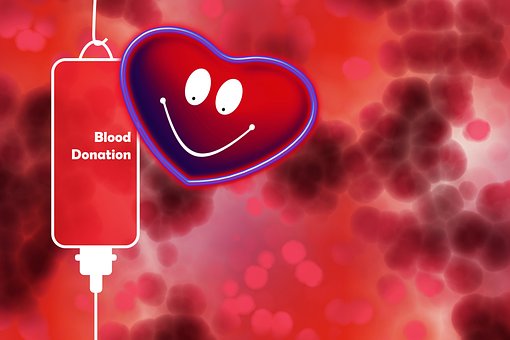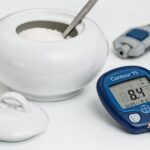Tuesday, February 21, 2023
A single blood donation can save three lives, saving not only the recipients but the health of blood donors as well. This article is about the importance of blood donation, its types, the benefits of blood donation, and the cases in which it is forbidden to donate blood.
What is blood donation?
He resorts to donating blood in the event of low blood levels in people as a result of illness or exposure to an accident. Blood and its derivatives are donated to provide the body with sufficient oxygen and nutrients necessary to maintain its health and the functions of its organs.
This process takes place by receiving about half a liter of blood from donors and then separating its components from each other, specifically platelets, plasma and red cells, to be transferred to people whose health condition has deteriorated due to blood loss.
Just Global Health OrganizationThe groups that need blood represent women who are at risk of health complications during pregnancy and childbirth, then children with acute anemia, accident victims, cancer patients, or people in need of surgery such as transplantation, cardiovascular surgery, orthopedic surgery, or As a result of internal or external bleeding.
Types of blood donations
Types of blood donation differ according to the components and derivatives of blood, which usually contains oxygen-carrying red cells, which enhance the blood’s ability to carry oxygen, then the necessary platelets to help blood clotting and stop bleeding, then plasma to help protect people from disease. And it is divided Types of blood donations as follows:
1. Whole blood donation
Whole blood donation means obtaining blood for transfusion in complete form that includes plasma, red and white blood cells, platelets, antibodies and antibodies, or using it after separating it from these components. This blood is transfused to patients after injuries or people who need surgery.
2. Platelet donation
During the blood donation process, platelets and some plasma are separated from the blood, then red blood cells and other plasma are returned to the donor, and used to treat cancer diseases, organ transplants, and then some surgeries as needed.
3. Plasma donation
Plasma can be transfused after blood donation, regardless of the donor’s blood type, for people in an emergency situation or people who have been involved in traffic accidents to help stop bleeding. Plasma is obtained when donating blood by separating it from the red blood cells and platelets that are returned to the donor.
4. Double red blood cell donation
Red blood cells are preserved after blood donation by separating them from the platelets and plasma that is returned to the donor. Red blood cells are transfused to accident victims, newborns or people with anemia.
5. Self donation
Autologous donation means that a person donates blood prior to undergoing an operation to be transfused during the operation or some time after the operation. However, in this case, the person is required to be in good health and not have a heart disease or infection.
Conditions for donating blood
During the blood donation process, about half a liter of blood is obtained, which represents 8% of the average adult blood volume. The body works to compensate for this ratio between 24 and 48 hours.
Healthy adults can donate blood at least twice a year. The time period between blood donation periods can vary according to the type that was donated, as it should wait for at least 8 weeks in the case of whole blood donation, and wait for 16 weeks in the case of double red blood cell donation, and 7 days in the case of platelet donation. And 28 days in the case of donating plasma.
1. Age and weight requirements
The age of the blood donor should be between 18 years and 75 years, and the weight should not be less than 50 kg.
2. Health requirements and exclusion criteria
The process of donating blood should not harm the donor himself, therefore, it is not recommended to donate blood in private the following cases:
- feeling unwell
- Suffering from anemia.
- period of pregnancy or lactation.
- Having a medical condition that prevents you from donating.
- Get some medicine.
3. Restrictions on medications
The donor must be in good health, and it is forbidden for him to donate blood if he is taking certain medications, such as antibiotics as a result of a cold or flu, or any other medications taken to treat a health condition.
4. Blood test
The blood should usually be indicated to be free of any life-threatening infections, therefore, people should not donate blood at any time the following cases:
- Infection with HIV or a sexually transmitted disease.
- Exposure to the risk of contracting a sexual infection.
- Injection of drugs and drugs.
- Getting a tattoo or having sex with someone who got it.
- Ear or body piercing or having sex with someone who got it.
Benefits of donating blood
Regular donation can help maintain people’s health and prevent them from disease, as a study has shown that annual donation can reduce death-causing factors by 7.5%. Other benefits of donating blood include:
-
Undergo a blood test
Donating blood enables a blood test, which helps detect diseases or health conditions that were not previously detected, such as high or low blood pressure, or anemia, by detecting blood pressure, body temperature, heart rate, and iron levels in the body. the blood. It also enables the detection of hepatitis and then sexually transmitted diseases such as HIV and syphilis.
-
Reducing iron levels for hemochromatosis patients
Hemochromatosis causes the body to absorb high levels of iron and store it in the liver, heart and pancreas, which can affect the functions of these organs and lead to liver and heart disease and diabetes. Donating blood can help reduce iron levels in hemochromatosis patients to reduce the risk of disease.
-
Prevention of heart disease
A study has shown that regular blood donation can help prevent heart disease and keep it healthy Heart health blood vessels, it can also reduce Hypertension Pathogenic.
Risks and adverse reactions associated with blood donation
The process of donating blood is considered safe as long as the blood donation centers follow the recommended medical guidelines, and the most that a person can feel after that is bleeding or bruising at the site of the needle. However, some people can suffer from some side effects after they donate blood, often as a result of their young age, poor weight or donation, and the side effects that should see a doctor include:
- The constant feeling of dizziness and nausea even after eating, drinking and resting.
- Continued bleeding at the needle site.
- Sensation of pain, tingling or numbness in the arm.
- Reduction of Blood pressure.
- Muscle contraction and spasm.
- Finding it difficult to breathe.
- Fainting and vomiting.
Frequently asked questions that may interest you
What happens in the body after donating blood?
The body has the ability to replace lost cells and fluids after donating about a pint of blood. During the donation process, the body loses red blood cells and the level of oxygen in the blood decreases, at which time the erythropoietin protein is secreted, which passes through the bloodstream until it reaches the bone marrow, which stimulates the production of white cells, platelets and red blood cells by more, until these cells return to their levels. Normal a few days after the donation process.
How do you replace blood after donating?
Many factors interfere with compensating for the percentage of blood that has been donated, the most important of which is drinking enough fluids immediately after donating blood in order to replace fluids to return the blood percentage to normal. Contributing to this, the function of the kidneys that regulate the levels of sodium and water in the body.
Care should be taken to eat healthy and balanced meals for 24 to 48 hours after the donation process, by including in these meals various foods rich in iron, red meat, spinach, juices and fortified cereals.











